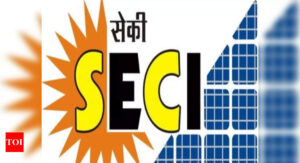Pegasus a ‘serious issue’, but why were petitioners silent for 2 years, asks SC | India News – Times of India

NEW DELHI: The Supreme Court has sought the Union government’s presence on Tuesday to answer the court’s queries on the “serious issue” of alleged misuse of Pegasus spyware to snoop on phones of civilians and politicians, but expressed deep disappointment that the high-profile PILs demanding a judicial probe into the matter were filed casually and merely on the basis of newspaper reports without any authentic material.
Appearing for petitioner N Ram, senior advocate Kapil Sibal opened the arguments and said, “Pegasus is a rogue technology, entirely illegal. It infiltrates our lives without our knowing. That’s the nature of technology. All that is required is a telephone call to infiltrate our phones. Then it hears, watches and surveys every minute of our movement. It is an assault on privacy, human dignity and values of our Republic. It then penetrates into our national internet backbone. It is an issue of national security. The government must answer the questions before SC.”
An hour-long argument saw counsel pitching their cases high, leading the bench of Chief Justice N V Ramana and Justice Surya Kant to repeatedly seek answers to a few basic questions – why these educated and resourceful petitioners kept silent for two years as the Pegasus issue is in public domain since 2019? Do the petitioners, except the Editors’ Guild, have any verifiable material on Pegasus misuse except for relying on newspaper clippings? If some petitioners’ phones were hacked using Pegasus, did they lodge any police complaint?
After Sibal’s preliminary submissions on behalf of noted journalist N Ram, the CJI-led bench said, “Majority of the PILs before us, except the Editors Guild petition, are all similar and based on reports in foreign newspapers and agencies. Secondly, you all know that the PILs must have prima facie credible material, which are verifiable, only then we can order an investigation or entertain the writ petitions.”
No law officer was present to defend the Centre on an issue that has snowballed to stall business in Parliament.
The bench agreed that “no doubt the allegations are serious, if the newspaper reports are correct”. But the most dramatic charge against the Union government was made by senior advocate Shyam Divan, appearing for Jagdeep Chhokkar. He said use of Pegasus “constituted a war by the government against its citizenry”.
The bench asked all petitioners to give copies of their PILs to the Union government.
The lengthy but orderly hearing saw the bench bluntly telling serial PIL petitioner M L Sharma, who was first off the block: “Except newspaper cuttings, is there anything in your petition? What type of writ petition is this? You want the court to collect information and argue your case? This is not the way to file a PIL. What is the material except paper cuttings? You made a complaint to the CBI on July 21. The very next day, you don’t even give them a day’s time, you filed a writ petition? There is no question of allowing this type of petition.”
The CJI said, “Unfortunately, what I read from the writ petitions, in May 2019, this (Pegasus issue) came into public domain. I don’t know of any effort or serious concern (expressed by petitioners) about this issue. Suddenly now this is reported and again it’s come into light. We don’t find fault with it”.
“Another angle is, some of the people who have filed writ petitions, they claim that their phones were hacked and intercepted. They know about the provisions of the Indian Telegraph Act and Information Technology Act to file criminal complaints. It appears, they have not stated in their writ petition, whether any of them had made any effort to file criminal complaints against any. These are the issues you need to explain to us,” the bench said. All the petitioners conceded that they have not filed any police complaint under Telegraph Act or IT Act.
Sibal said the petitioners did not have direct access to the information. “The Editors Guild petition gives details of 37 verified cases of hacking by using Pegasus spyware,” he said and took the court through the California court’s interim order on a suit filed by WhatsApp against NSO.
“Pegasus spyware is sold only to government agencies and no private agency has any access to it. After the California court order, nobody can deny that Pegasus does infiltrate. Whether it was done in India is the question, which the Union government alone can answer,” he said. The CJI drew Sibal’s attention to N Ram’s petition and said the petitioner has stated on affidavit that the California court order indicates that some Indian journalists are being snooped upon. “Where does the California court say so, I didn’t come across any such sentence in the California court order”.
Embarrassed by the court finding out a wrong statement made by N Ram, Sibal said, “You will not find it in the California court order. That you will find in the Editors’ Guild petition where we have given names of 37 verified cases.” But the CJI appeared to rub it in. “So, N Ram’s statement is not correct. If you see N Ram’s statement, it says California court said some of the Indians were targeted by Pegasus. But, it is not there in the US court order,” he said.
Appearing for petitioner N Ram, senior advocate Kapil Sibal opened the arguments and said, “Pegasus is a rogue technology, entirely illegal. It infiltrates our lives without our knowing. That’s the nature of technology. All that is required is a telephone call to infiltrate our phones. Then it hears, watches and surveys every minute of our movement. It is an assault on privacy, human dignity and values of our Republic. It then penetrates into our national internet backbone. It is an issue of national security. The government must answer the questions before SC.”
An hour-long argument saw counsel pitching their cases high, leading the bench of Chief Justice N V Ramana and Justice Surya Kant to repeatedly seek answers to a few basic questions – why these educated and resourceful petitioners kept silent for two years as the Pegasus issue is in public domain since 2019? Do the petitioners, except the Editors’ Guild, have any verifiable material on Pegasus misuse except for relying on newspaper clippings? If some petitioners’ phones were hacked using Pegasus, did they lodge any police complaint?
After Sibal’s preliminary submissions on behalf of noted journalist N Ram, the CJI-led bench said, “Majority of the PILs before us, except the Editors Guild petition, are all similar and based on reports in foreign newspapers and agencies. Secondly, you all know that the PILs must have prima facie credible material, which are verifiable, only then we can order an investigation or entertain the writ petitions.”
No law officer was present to defend the Centre on an issue that has snowballed to stall business in Parliament.
The bench agreed that “no doubt the allegations are serious, if the newspaper reports are correct”. But the most dramatic charge against the Union government was made by senior advocate Shyam Divan, appearing for Jagdeep Chhokkar. He said use of Pegasus “constituted a war by the government against its citizenry”.
The bench asked all petitioners to give copies of their PILs to the Union government.
The lengthy but orderly hearing saw the bench bluntly telling serial PIL petitioner M L Sharma, who was first off the block: “Except newspaper cuttings, is there anything in your petition? What type of writ petition is this? You want the court to collect information and argue your case? This is not the way to file a PIL. What is the material except paper cuttings? You made a complaint to the CBI on July 21. The very next day, you don’t even give them a day’s time, you filed a writ petition? There is no question of allowing this type of petition.”
The CJI said, “Unfortunately, what I read from the writ petitions, in May 2019, this (Pegasus issue) came into public domain. I don’t know of any effort or serious concern (expressed by petitioners) about this issue. Suddenly now this is reported and again it’s come into light. We don’t find fault with it”.
“Another angle is, some of the people who have filed writ petitions, they claim that their phones were hacked and intercepted. They know about the provisions of the Indian Telegraph Act and Information Technology Act to file criminal complaints. It appears, they have not stated in their writ petition, whether any of them had made any effort to file criminal complaints against any. These are the issues you need to explain to us,” the bench said. All the petitioners conceded that they have not filed any police complaint under Telegraph Act or IT Act.
Sibal said the petitioners did not have direct access to the information. “The Editors Guild petition gives details of 37 verified cases of hacking by using Pegasus spyware,” he said and took the court through the California court’s interim order on a suit filed by WhatsApp against NSO.
“Pegasus spyware is sold only to government agencies and no private agency has any access to it. After the California court order, nobody can deny that Pegasus does infiltrate. Whether it was done in India is the question, which the Union government alone can answer,” he said. The CJI drew Sibal’s attention to N Ram’s petition and said the petitioner has stated on affidavit that the California court order indicates that some Indian journalists are being snooped upon. “Where does the California court say so, I didn’t come across any such sentence in the California court order”.
Embarrassed by the court finding out a wrong statement made by N Ram, Sibal said, “You will not find it in the California court order. That you will find in the Editors’ Guild petition where we have given names of 37 verified cases.” But the CJI appeared to rub it in. “So, N Ram’s statement is not correct. If you see N Ram’s statement, it says California court said some of the Indians were targeted by Pegasus. But, it is not there in the US court order,” he said.






